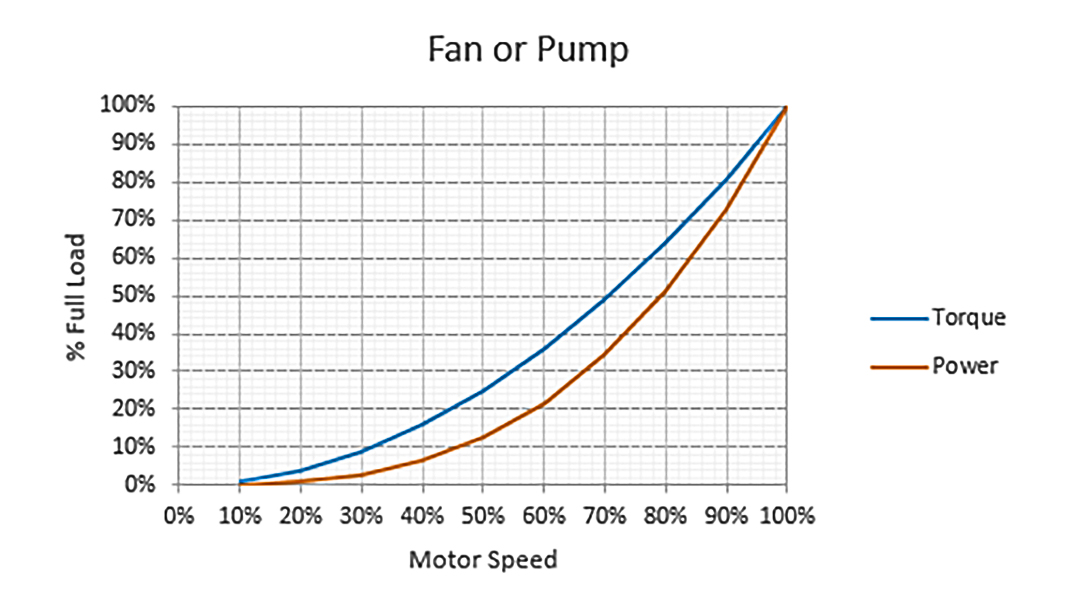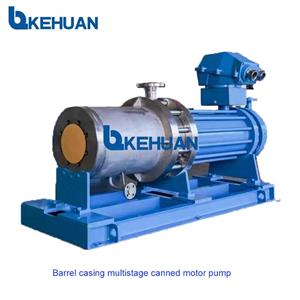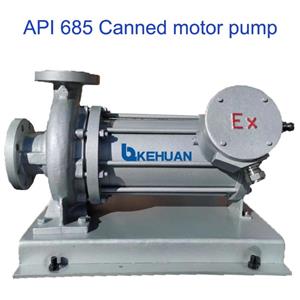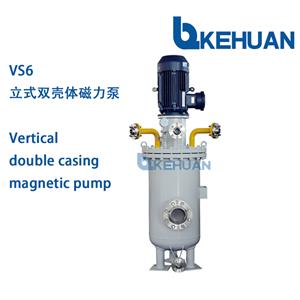Making Electric Pump Motors More Sustainable—Green Is Good Business
When thinking about pumps used in industry, the focus tends to be on the materials they move, ranging from water and wastewater, chemicals, oil, petroleum, sludges and slurries, all the way to food. There is also a focus on their costs, efficiency and maintenance. Environmental impact tends to be much lower on the list of considerations, but greener and more efficient pumps are also good for business. Every pump has a motor; so it is not surprising that pumps are responsible for 21% of all industrial sector motor system electricity consumption. Lowering this number can make pumps greener and reduce operational costs.

IMAGE 1: Fan or pump efficiency (Source: inverterdrivesystems.com)
The Energy Problem
The energy problem is not limited to pumps. Everyone is using increasing amounts of energy. Industries are growing, the population is rising and the pumps industry needs to keep up with the demand for water, electricity, products and services. The United States Environmental Protection Agency (EPA) statistics show that over half of the electricity used in manufacturing is used to power motors, and the U.S. industry is responsible for almost 25% of the country’s greenhouse emissions.
The trend plays out globally, too. According to the International Energy Agency (IEA), electric motors and systems account for over 40% of global electricity consumption. The use of electric motors and systems is expected to keep growing. This will increase the number of harmful emissions released.
Regulatory Focus
Motors are getting more attention from regulators, and as a result, pump manufacturers will be affected. The European Union’s new Ecodesign Regulation 2019/1781 went into effect on July 1, 2021, for low-voltage induction motors and variable speed drives (VSD) and requires a wide range of electric motors to meet the IE3 premium efficiency standard. The regulatory change raises mandatory minimum efficiency levels, expands the range of motors covered and, for the first time, includes VSDs.
Effective July 1, 2023, it mandates higher efficiency standards for some motor categories, raising the base level for certain motors to IE4 super-premium efficiency. Outside the EU, post-Brexit United Kingdom (U.K.) will adopt the same regulation and some other countries are likely to follow these principles. The energy efficiency level is expressed in IE efficiency classes, from IE1 (lowest) to IE5 (highest). Under the current regulation, motors must reach the IE2, IE3 or IE4 efficiency level depending on their rated power and other characteristics. For instance, three-phase motors with a rated output between 0.75 kilowatts (kW) and equal to or below 1,000 kW were required to reach the IE3 level by July 2021. Motors between 75 kW and 200 kW must meet the IE4 level by July 2023.
In the U.S., the Department of Energy (DOE) recently issued a prepublication Federal Register notice undertaking a review for amended energy conservation standards for small electric motors. This is to determine whether to amend applicable energy conservation standards for such equipment. And do not forget the new rule changes proposed by the Securities and Exchange Commission (SEC) that would require climate-related information in registration statements and annual reports provided by investors, including (per SEC website):
“the registrant’s governance of climate-related risks and relevant risk management processes
how any climate-related risks identified by the registrant have had or are likely to have a material impact on its business and consolidated financial statements, which may manifest over the short-, medium- or long-term
how any identified climate-related risks have affected or are likely to affect the registrant’s strategy, business model and outlook”
Disclosure of a registrant’s greenhouse gas emissions would also be required, which will put pressure on suppliers—including pump manufacturers—to reduce their contribution to this global problem.
The main message is this: companies need to be prepared to address their environmental impact. The environment is not the first thing businesses think about when choosing pump motors, but there are benefits to going green, including:
Pump manufacturers that can meet the regulatory mandates will have a competitive advantage in the market.
Greener motors have tangible benefits to users.
Savings from lower electric bills are important. Electricity costs for industrial use rose almost 6% from a national average of 6.9 cents per kWh in January 2021 to 7.3 cents in January 2022.
So, it is worth considering that new, more environmentally friendly and more efficient systems that use energy in a smarter way would decrease costs and harmful emissions, killing two birds with one stone.
Competitive & Green
Electric industrial pump motors themselves, due to the number of them in use, could singlehandedly make a huge dent in industrial energy use. According to ABB’s calculations, electricity consumption could be cut by one-fifth if high-efficiency motor systems were adopted globally. This might sound like a pipe dream but increasingly more is expected from motors. Higher IEC standards are already out there.
According to Omdia, 75% of industrial motors run pumps, fans and compressors, all of which have significant opportunities for efficiency improvements. For example, a variable speed drive (VSD) can typically reduce power consumption by 25% when added to the existing motor of a pump, fan or compressor. However, less than a quarter of the world’s pump motors are currently equipped with a VSD.
Take the example of water handling alone. Pumping can consume up to 85% of the energy used in water handling. A 2021 paper by ABB estimated that improved systems with VSDs and high efficiency motors could result in energy savings of 25% to 30%. And although this estimate regarded the water and wastewater industry, there is no reason to believe that what applies to one pump motor will not apply to another situation simply because they are used in different locations and businesses.
All About Efficiency
To get the best level of efficiency and associated energy savings, there are three key considerations to remember when evaluating motors. First, the industry cannot meet its goals by relying on old technology. For example, induction motors are typically 75% efficient at best. Their efficiency can be improved by pairing them with a VSD, but this is really a partial solution best left to situations where retrofit is the only option. The best results could come from synchronous permanent magnet motors (PMM), which can achieve efficiencies of over 90%.
Second, the motor should be paired with a well-matched VSD. Note that the system efficiency is calculated by multiplying the motor efficiency level by the efficiency rating of the drive. For example, if a motor that is 90% efficient is paired with a drive that is 90% efficient, the system will only be 81% efficient. System performance is what counts when it comes to the amount of energy used and systems that are over 90% efficient are achievable. It should be noted that VSDs operate over a range of speeds. This has two benefits.
First, one motor system can address several speed ranges, reducing the need for a more varied product line. Second, the relationship between the speed and power of a pump needs to be considered as it follows a cubic power curve. The flow is proportional to the speed. If the system runs 10% slower, it provides 90% flow.
Also, the torque is proportional to the speed squared and the power is proportional to the speed cubed. As a result, slowing the pump by 10% reduces the power used to 73% of full power. Assuming this is appropriate for the application, it can provide even more savings.
Finally, it is not complicated to dive into the design itself and check if the motor uses fewer materials or if it uses them more effectively. New designs and better use of materials available are not a pipe dream for the pump industry. Smaller but scalable designs are possible.
A well-designed system can use less material, resulting in motors and drives that are smaller, lighter and cost effective. By taking a systems approach in motor evaluation, pump manufacturers can optimize their products to meet the end users’ goals and the regulatory requirements.
Consumers’ green preferences are not always enough to affect purchasing or manufacturing decisions. So, the fact that improved efficiency pump motors will use less electricity and save on operating costs is something to consider.
Kehuan made Magnetic driven pumps euiped with IEC motor, much higher efficency than canned motor pumps.
Sustainability and efficiency are words that are thrown around a lot. Electric pump motors that are more energy efficient are suitable for industrial applications and they could affect the natural environment less. Finding options that are scalable, more efficient, and easier for consumers to operate is the way to make the industry greener, more sustainable and more viable, all at the same time.
https://www.pumpsandsystems.com/




